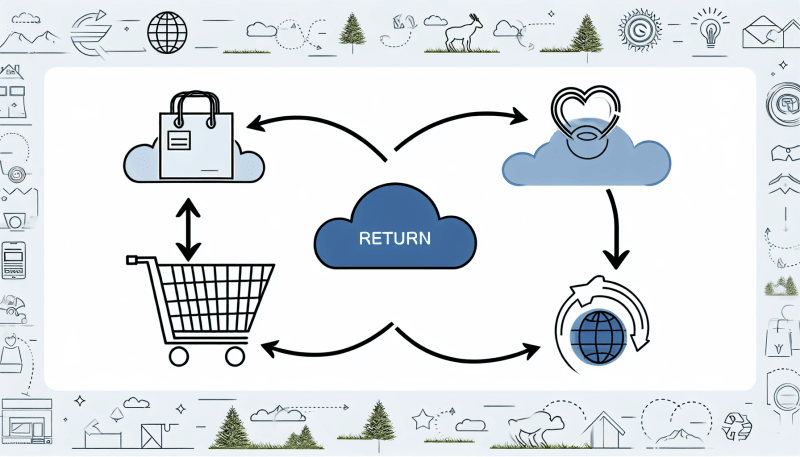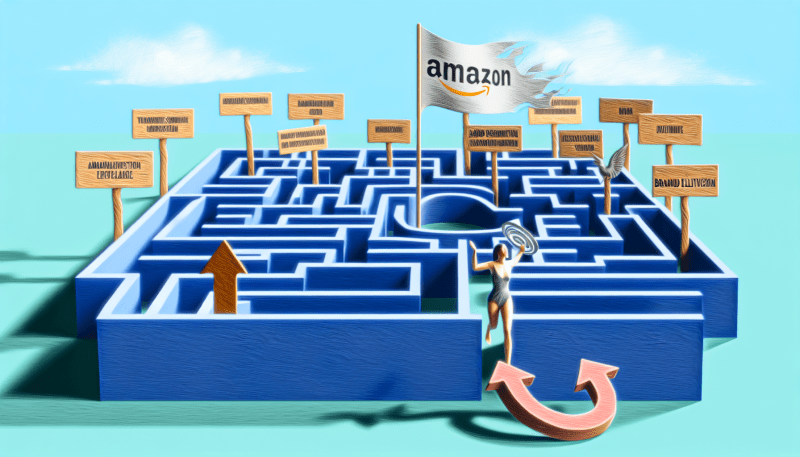Maximizing Profit Margins on Amazon: A Seller's Guide
As the online marketplace continues to expand, Amazon remains a titan in the e-commerce world, offering unparalleled opportunities for sellers to reach a vast, global audience. However, navigating the waters of Amazon selling is no simple task, especially when it comes to maintaining healthy profit margins. In this guide, we'll delve deep into the strategies, insights, and practices that can help you maximize your profit margins on Amazon, ensuring your business not only survives but thrives in the competitive e-commerce landscape.
Understanding Your Profit Margins on Amazon
Before diving into strategies for maximizing profit margins, it's crucial to understand what profit margins are and how they are calculated on Amazon. In the simplest terms, your profit margin is the percentage of the selling price that turns into profit, after all, costs associated with selling your product have been subtracted. For Amazon sellers, these costs can include manufacturing, shipping, Amazon fees (such as FBA fees, seller fees, and referral fees), and any marketing or promotional costs.
To calculate your profit margin, use the following formula:
Profit Margin = ((Selling Price - Total Costs) / Selling Price) * 100
Knowing your profit margin is essential for making informed decisions about pricing, marketing, and product selection.
Optimizing Product Selection for Better Margins
One of the most effective ways to ensure healthy profit margins on Amazon is by thoughtful product selection. Choose products that not only have a high demand but also face less competition and have room for a healthier markup. Conducting thorough market research and using tools like Amazon's Best Sellers list, Google Trends, and various product research tools can help identify lucrative niches and products with potential for high margins.
Managing Amazon Fees for Higher Profitability
Amazon fees can take a significant bite out of your profit margins if not carefully managed. These fees vary depending on factors like your selling plan, fulfillment strategy (FBA or FBM), product category, and the product's size and weight. To maximize your profit margins, it's crucial to understand these fees in detail and strategically choose the most cost-effective selling and fulfillment methods for your products.
For many sellers, Amazon FBA offers convenience and advantages, such as eligibility for Prime, but it's essential to analyze if the FBA fees are justified for your specific products. Sometimes, fulfilling orders yourself (FBM) might be more cost-effective, especially if you can manage shipping and handling efficiently.
Effective Pricing Strategies to Improve Margins
Setting the right price for your products is a delicate balance that requires considering both market demand and your total costs. Competitive pricing is essential on Amazon, but it doesn't always mean having the lowest price. Implementing dynamic pricing strategies, where prices are adjusted based on market conditions, competition, and demand, can help maintain competitive edges while protecting your margins.
Utilize Amazon’s pricing tools and third-party software to monitor your competition’s pricing strategies in real-time and adjust your prices accordingly. Remember, the goal is to find the sweet spot where your price maximizes both sales volume and profit margins.
Reducing Costs to Maximize Margins
Another critical strategy for maximizing profit margins on Amazon involves actively seeking ways to reduce costs. This could include negotiating better rates with suppliers, improving inventory management to reduce storage fees, or optimizing your shipping processes to lower shipping costs.
Consider leveraging economies of scale by buying in larger quantities to reduce per-unit costs, as long as storage costs and inventory turnover rates justify the larger investment. Additionally, constantly look for efficiencies in your operational processes that can lower costs without compromising product quality or customer satisfaction.
Leveraging Amazon Ads for Higher Margins
Effectively using Amazon's advertising platform can be a powerful way to increase visibility, drive sales, and ultimately, improve profit margins. By targeting ads to your ideal customers and using strategic bidding, you can increase your product's visibility and sales volume. The key is to monitor your advertising cost of sale (ACoS) closely to ensure that your advertising efforts are cost-effective and contribute positively to your profit margins.
Advertising can seem like an added cost, but when used correctly, it's an investment that leads to higher sales volumes, which can improve economies of scale and potentially lower per-unit costs.
In conclusion, navigating profit margins on Amazon requires a multifaceted approach that includes understanding and managing your costs, optimizing your pricing and product selection, and strategically using advertising to boost sales. By following the strategies outlined in this guide, you can increase your chances of achieving and maintaining healthy profit margins on Amazon, positioning your business for long-term success in the competitive e-commerce landscape.
Maximizing Your Earnings: A Comprehensive Guide to Amazon Profit Margins for Sellers
The realm of e-commerce is ever-expanding, with Amazon leading the charge as a monumental platform that connects sellers with a global customer base. Yet, the journey of selling on Amazon is fraught with challenges, particularly when it comes to preserving healthy profit margins. This guide aims to uncover the layers of strategy, expertise, and insight necessary for sellers to not just sustain but significantly amplify their profit margins on Amazon, propelling their business to unparalleled heights in a fiercely competitive e-commerce realm.
Decoding Profit Margins for Amazon Sellers
Grasping the concept of profit margins is paramount before embarking on any strategy to enhance them. Essentially, the profit margin is the portion of the selling price that remains after deducting all associated selling costs. Amazon sellers have to contemplate various expenses such as production, shipping, an array of Amazon-specific fees (like FBA fees, seller fees, referral fees), and expenditures on marketing and promotions.
The formula to calculate your profit margin is as follows:
Profit Margin = ((Selling Price - Total Costs) / Selling Price) * 100
Understanding your profit margin is the cornerstone of strategic decision-making regarding pricing, marketing, and product selection endeavors.
Strategizing Product Selection to Elevate Margins
Selecting the right products is critical in securing substantial profit margins. The key is to identify products with high demand yet low competition, allowing for considerable markup opportunities. Extensive market research, along with leveraging tools like Amazon's Best Sellers list, Google Trends, and specialized product research tools, can unveil profitable niches and products primed for high margins.
Mastering Amazon Fees to Boost Profitability
Without astute management, Amazon's complex fee structure can significantly erode profit margins. These fees vary by selling plan, fulfillment strategy, product category, and the size and weight of the product. Improving profit margins necessitates a deep understanding of these fees and making informed decisions about the most economical selling and fulfillment methods.
While Amazon FBA provides convenience and benefits like Prime eligibility, it's crucial to assess whether the associated fees justify the cost for your specific products. In some instances, self-fulfillment (FBM) may prove more cost-efficient, particularly if you can manage shipping and handling effectively.
Implementing Dynamic Pricing Strategies
Finding the optimal price point for your products involves a careful balancing act, taking into account market demand and total costs. Competitive pricing is vital, yet the lowest price is not always necessary. Employing dynamic pricing strategies that adjust prices based on market dynamics and competition can help preserve your edge while safeguarding margins.
Employ Amazon’s pricing tools and third-party software to track competitors’ pricing strategies and adjust your prices to find the ideal balance that maximizes sales volume and profit margins.
Cost Reduction Strategies for Margin Improvement
Actively seeking ways to reduce costs is another vital strategy for maximizing profit margins. This may include negotiating better rates with suppliers, enhancing inventory management to lower storage fees, or streamlining your shipping processes to minimize costs.
Buying in bulk to achieve economies of scale may also lower per-unit costs, provided the investment is justified by storage costs and inventory turnover. Continually seek operational efficiencies that can trim costs without sacrificing product quality or customer satisfaction.
Utilizing Amazon Ads to Enhance Profit Margins
Effectively leveraging Amazon Advertising can significantly increase product visibility, drive sales, and, in turn, improve profit margins. Targeting ads to your ideal customers and strategic bidding can amplify your product's exposure and boost sales volume. The key is closely monitoring your advertising cost of sale (ACoS) to ensure advertising efforts are economical and contribute positively to profit margins.
While advertising may seem like an additional expense, when strategically executed, it represents an investment that leads to increased sales volumes. This, in turn, can enhance economies of scale and potentially reduce per-unit costs.
In summary, navigating profit margins on Amazon demands a comprehensive strategy that encompasses understanding and controlling costs, optimizing pricing and product selection, and using advertising to strategically increase sales. By employing the strategies discussed in this guide, sellers can enhance their chances of achieving sustainable, healthy profit margins on Amazon, thus ensuring long-term success in the competitive e-commerce landscape.







